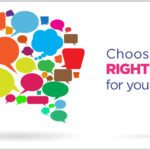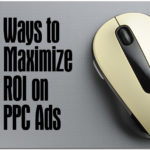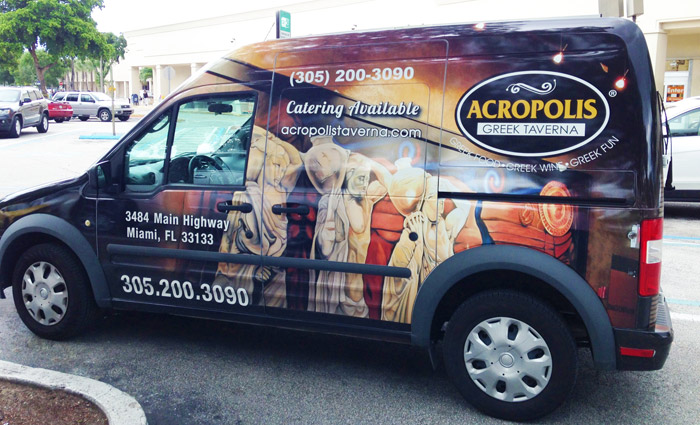
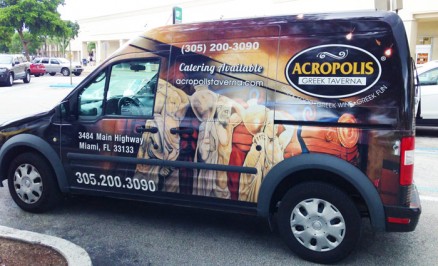
Wrap advertising (Vehicle Wraps) is the marketing practice of completely or partially covering (wrapping) a vehicle in an advertisement or livery; a mobile billboard is the outcome of the process. Wrap advertising can be achieved by painting onto a vehicle’s outer surface, but an increasingly ubiquitous practice in the 21st century involves the use of large vinyl sheets as “decals.” The vinyl sheets can be removed with relative ease, drastically reducing the costs associated with changing advertisements. While vehicles with large, flat surfaces, such as buses and light-rail carriages, are often utilized due to ease, smaller cars consisting of curved surfaces can also serve as hosts for wrap advertising.
 Recent advancements in vinyl development have led to new types of vinyl, designed specifically for wrap advertising—this includes vinyl that feature bubble-preventing air channels and microscopic glass beads that prevent an adhesive from functioning until the user is prepared (the beads allow the material to be repeatedly lifted and reapplied during the wrapping process, without compromising the longevity of the wrap). The vinyl is heated with a heat gun or torch for the purpose of molding the material around objects.
Recent advancements in vinyl development have led to new types of vinyl, designed specifically for wrap advertising—this includes vinyl that feature bubble-preventing air channels and microscopic glass beads that prevent an adhesive from functioning until the user is prepared (the beads allow the material to be repeatedly lifted and reapplied during the wrapping process, without compromising the longevity of the wrap). The vinyl is heated with a heat gun or torch for the purpose of molding the material around objects.
Decals can be made to cover side and rear windows on a vehicle, though for obvious safety reasons, the front windows used by the driver are not covered. The decals on side windows are typically perforated so that it is still possible for passengers to look outside. A wrap must often be divided into a number of smaller pieces to appropriately cover any movable panels on the vehicle, such as the fuel tank cover, trunk (boot) openings, and other doors.
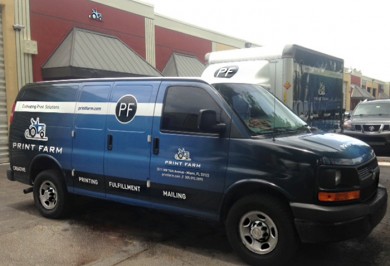 Wrapping is also sometimes used instead of paint as a less-permanent way of applying its operator’s standard livery than paint. This has become particularly common in the United Kingdom where, since the privatization of British Rail, it has become quite frequent for trains to be transferred from one company to another and thus require many changes of livery. Wrapping is also used for vehicle customizing and mobile advertising. Race cars opt for vehicle wraps in that it is lighter than paint.
Wrapping is also sometimes used instead of paint as a less-permanent way of applying its operator’s standard livery than paint. This has become particularly common in the United Kingdom where, since the privatization of British Rail, it has become quite frequent for trains to be transferred from one company to another and thus require many changes of livery. Wrapping is also used for vehicle customizing and mobile advertising. Race cars opt for vehicle wraps in that it is lighter than paint.
Industry analysts, researchers and trade representatives have researched the effectiveness of mobile billboards. Outdoor Advertising Magazine said that outdoor mobile media billboards have a 97% recall rate, and 99% of survey respondents thought mobile advertising is more effective than traditional outdoor advertising. 3M and the American Trucking Associations noted 91% of the target noticed the text and graphics on truck advertising, and the Traffic Audit Bureau noted that on local routes monthly impressions ranged from one to four millions hits. Product Acceptance and Research said 94% of respondents recalled seeing the Mobile Billboard, with 80% recalling the specific advertisement; the billboards resulted in a sales increase of 107%




